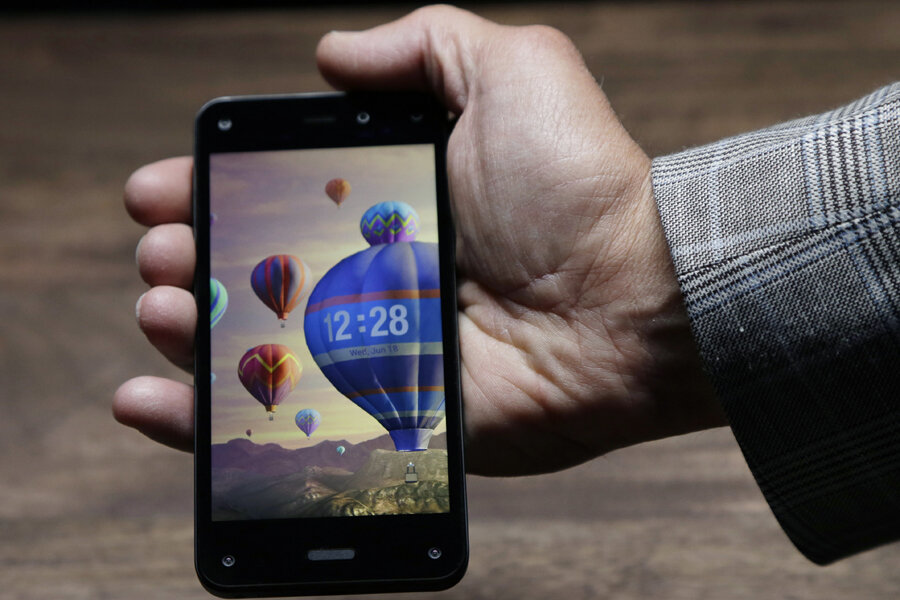Look deeper into the Amazon Fire Phone's 3-D features
Loading...
It's finally here.
The long-anticipated Amazon smart phone made its debut Wednesday and it has many of the bells and whistles that have been circulating the rumor mill for weeks by this point. But while many reports of the device are focusing on the Firefly feature – essentially turning the phone into a giant buying machine for Amazon – there's another feature with the possibility to separate this device from a pack dominated by Samsung and Apple: 3-D.
With four cameras built into the front of the phone, and using sensors that track your facial movements, known as "Dynamic Perspective," the phone's 4.7-inch screen lets you look around and even behind objects in an image. No, these images are not leaping out at you in some cartoonish fashion. Rather, this is a gentler kind of 3-D, focusing more on depth of field than eye-popping graphics.
Previous examples of 3-D technology have been called "gimmicky," from smart phones to 3-D TV.
But this could be the device that makes it mainstream.
"It seems this is the start of more 3-D trends," says Tuong Nguyen, an analyst at the technology firm Gartner who specializes in mobile and augmented reality.
From the graphics on 3-D maps to the possibilities for games, Mr. Nguyen says this technology provides a range of possibilities for users and app developers alike.
"I think there's much more technological capability that they can build off of here," he says.
Moreover, industries such as 3-D printing could benefit if people have ready access to 3-D imaging. "This could help you to easily produce the necessary blueprint that you need to make 3-D objects," he says.
Still, he's skeptical as to whether the technology is enough to sway people's opinion.
"Is it interesting and compelling enough to make people go out and buy it and leave their current devices? I'm not so sure," he says.
As Wired puts it:
In the best case scenario, this phone spurs a wave of apps that make good use of 3-D effects and hands-free navigation. If it’s a true development breakthrough and not just a gimmick, people will want those apps, and they’ll need this phone to run them. (For the time being, at least). In the worst case scenario, people will think this phone sounds kinda cool, play with it for a few minutes in an AT&T store, and go back to buying the iPhones and Galaxys they always have.
"Think about it like this," Nguyen adds. "Would your parents go out and buy it? It ups the game. But it doesn't change the game significantly."








